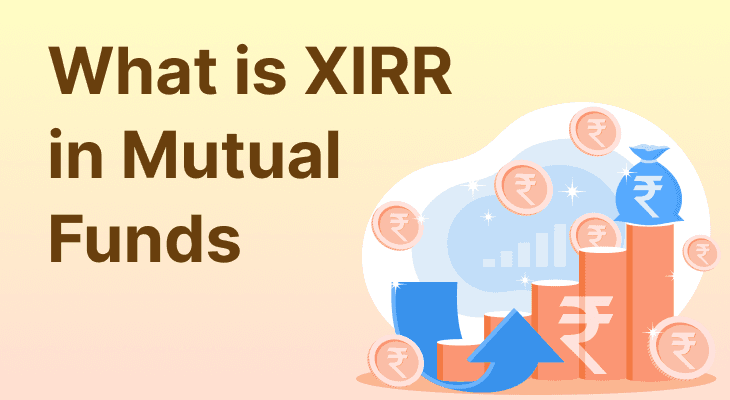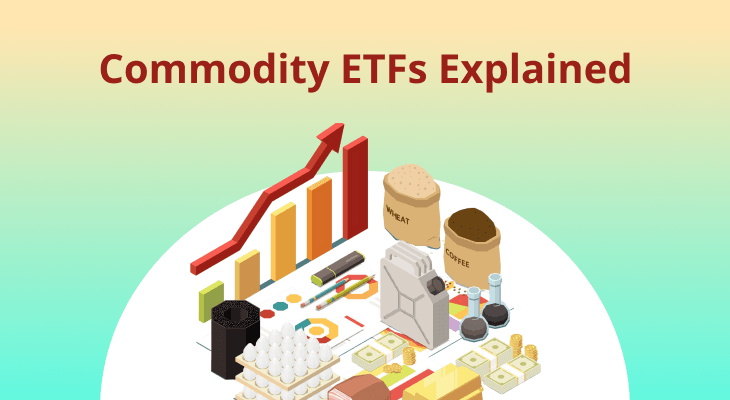
What is XIRR in Mutual Funds?
When investing in mutual funds, understanding the returns on your investments is crucial. While you may be familiar with terms like CAGR and annualised returns, another essential metric is XIRR. If you're wondering what XIRR is in mutual funds, this article will provide clarity. We'll explore how XIRR works, its importance in tracking your investments, and how it helps you assess your portfolio's performance, particularly with SIP calculators.
What is XIRR in Mutual Funds?
XIRR is a more advanced way of calculating returns on multiple cash flows that occur at different intervals. Unlike the CAGR (Compound Annual Growth Rate), which works best when you have a lump sum investment, XIRR in mutual funds accounts for irregular investment timings, making it ideal for SIP mutual fund investments. XIRR offers a more accurate measure of the returns earned over time, particularly in cases where you invest through SIPs.
By using XIRR calculators in SIPs, you can better understand your portfolio's performance, tracking how much you’ve earned based on both the invested amount and the frequency of contributions.
The Basics of XIRR in Mutual Funds
The XIRR full form in mutual funds is Extended Internal Rate of Return, which is essentially a method to calculate the annualised return when there are multiple investments made at various times. It considers both the time and amount of each cash inflow and outflow. This is particularly useful for SIP mutual fund investors, as you’re investing a fixed amount at periodic intervals.
The benefit of XIRR is its ability to consider these varied cash flows, providing a more precise reflection of your investment growth over time. While other methods offer a snapshot of returns, XIRR gives a more comprehensive view, helping you understand how profitable your mutual fund investments truly are.
How to Use XIRR In Mutual Fund Investments?
Using XIRR is crucial for calculating returns in mutual fund investments, especially if you invest via a Systematic Investment Plan (SIP). Most investors use an XIRR calculator to determine their portfolio's growth, giving them insight into their overall financial performance. The key to understanding XIRR mutual fund returns is realising that it factors in the date and the amount of each transaction, making it more accurate than methods like CAGR.
For instance, if you're investing in SIPs, the timing of your contributions can affect the final outcome. An XIRR mutual fund calculator accounts for these variations, offering an accurate picture of your investment journey.
How To Calculate XIRR?
Understanding the calculation behind XIRR is simpler than you might think. The formula for XIRR is based on the IRR (Internal Rate of Return) concept, but it accommodates varying cash flow timings. Here’s the XIRR formula for calculating the return:
0 = ∑ni=1 Ci / (1 + XIRR)(di−d0)/365
Where:
- Ci = Cash flows (both positive and negative)
- di = Date of the cash flow
- d0= The first date (base date)
- XIRR = The rate of return you’re solving for
Simply put, the formula balances out cash inflows and outflows across various points in time. Fortunately, most platforms today offer built-in XIRR calculators for SIP investments, so you don’t need to manually compute these figures. Using Excel, you can also use the XIRR function to get results automatically by inputting the dates and amounts of your investments and withdrawals.
Why is XIRR an Important Metric for Mutual Fund Investments?
The concept of XIRR in mutual fund investing is vital because it gives you a realistic measure of your portfolio’s performance. Here’s why it's particularly helpful:
- Accuracy Over Time: By taking into account the time and amount of each investment, XIRR helps you understand the exact annualised returns, unlike other methods that only focus on the beginning and ending points.
- SIP Investors Benefit: If you're using a SIP calculator, the XIRR metric works best to track returns because it accounts for all the cash flows, including periodic investments, dividends, and withdrawals.
- Real-World Performance: Since the XIRR mutual fund method factors in all transactions, it provides a clearer picture of real-world performance, allowing you to make more informed decisions on continuing or altering your mutual fund investments.
- Comparison with Other Metrics: You can use XIRR alongside other metrics like CAGR to better understand how your investment is growing. It is a good way to track and compare performance over time, especially when managing multiple funds.
Different Ways to Calculate XIRR
Now that you know the XIRR formula, you can calculate it by inserting the values for the different variables. However, this can be cumbersome, time consuming, and prone to errors. Instead, XIRR in mutual fund investments can be calculated using a variety of tools ensuring accuracy and efficiency:
- MS Excel: Microsoft Excel’s XIRR function allows you to easily compute your returns by entering the dates and amounts of your investments and redemptions.
- Online Calculators: Several financial websites offer free XIRR calculators to help you track your portfolio’s performance over time. You simply need to input your data to get an accurate reading.
- Mutual Fund Platforms: Most investment platforms offer built-in XIRR mutual fund calculators as part of their portfolio tracking tools. These automatically compute your returns based on your transactions.
Each of these methods is useful, but using a XIRR calculator for SIPs on your investment platform is the most convenient for tracking your returns.
Conclusion
Understanding what is XIRR in mutual funds is essential for tracking your mutual fund investment performance accurately, especially if you're investing in SIPs. The XIRR mutual fund method ensures that you get an annualised return figure that takes into account all your contributions and withdrawals over time. Whether you're calculating it through an XIRR calculator or using Excel, it's a crucial metric for any investor who wants a precise picture of their financial growth.
By applying this knowledge, you can better track your mutual fund investments, make informed decisions, and optimise your financial goals. Now that you understand the XIRR meaning in mutual fund terms, you can confidently manage your SIPs and other investments for long-term success.
SIPs let you invest small amounts regularly, making it easier to stay consistent with your goals. With time, your money grows faster through compounding, helping you get the most out of your investments. Try our SIP Calculator to see how your money can grow and make smarter plans for your future.
FAQ
Is XIRR better than CAGR?
XIRR is often considered better than CAGR for investments with irregular cash flows, like SIPs, because it accounts for varying investment dates. CAGR assumes a fixed annual return, making XIRR more accurate for mutual funds.
Is XIRR an annual return?
Yes, XIRR represents the annualised return of an investment, accounting for the timing of cash flows like investments and redemptions. It calculates the real rate of return over time, factoring in the dates of each cash flow.
What is the difference between interest rate and XIRR?
Interest rate is typically a fixed percentage charged or earned on a sum of money, while XIRR is a more dynamic metric that calculates the real rate of return on investments with varying cash flows over time.
How is XIRR calculated in mutual funds?
XIRR is calculated using the formula for Internal Rate of Return (IRR) but is adjusted to account for specific dates of cash inflows and outflows. This makes it an accurate way to assess performance in mutual funds with periodic investments.
Why is XIRR important for SIP investors?
XIRR is crucial for SIP investors as it calculates the annualised return based on varying investment dates. This method reflects the true performance of a mutual fund, giving SIP investors a clearer picture of their returns.
How does XIRR differ from IRR?
XIRR and IRR both calculate the rate of return, but XIRR includes the exact dates of cash flows, making it more accurate for investments with irregular cash flows, such as SIPs or mutual fund investments.
Can XIRR be negative?
Yes, XIRR can be negative if the investment loses value over the period, meaning the amount redeemed or current value is lower than the total amount invested. This signifies a negative return on the investment.
How does XIRR help in comparing mutual funds?
XIRR helps you compare mutual funds by giving you an annualised rate of return that factors in the timings of your investments and redemptions. This makes it easier to assess which fund has performed better over time.
What does a high XIRR indicate?
A high XIRR indicates strong annualised returns from your investments, considering the dates of all cash flows. It suggests that your mutual fund or SIP has performed well over the investment period, giving positive returns.
Can XIRR be used for other investments?
Yes, XIRR can be applied to any investment with irregular cash flows, including mutual funds, real estate, or business ventures. It’s a flexible tool to assess returns over time when cash flow dates vary.


